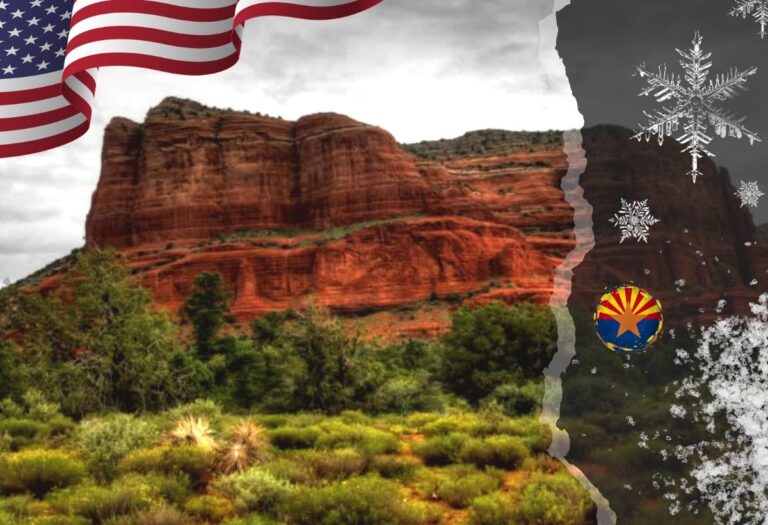If you’re planning a trip to Sedona, Arizona, you might be wondering about the weather and whether or not you need to pack a coat. Sedona is a popular destination known for its red rock formations and desert landscape, but does it snow in Sedona, Arizona?
In this post, we’ll explore the answer to this question and give you an idea of what to expect weather-wise when you visit Sedona.
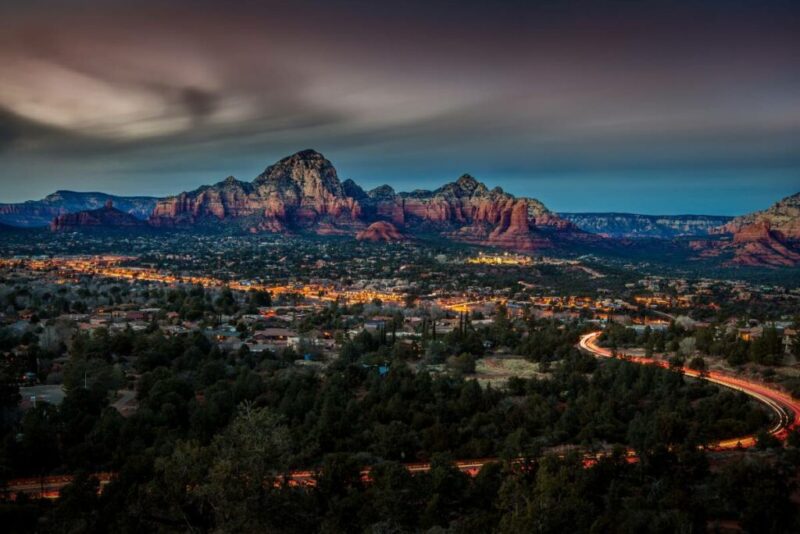
Does It Snow In Sedona, AZ?
Sedona, Arizona, is located in the desert, so it’s not common for the area to receive significant amounts of snowfall.
However, it is possible for the area to experience some light snowfall during the winter months, particularly in December, January, and February. So, Yes, It does Snow in Sedona, Arizona!
On Average, Sedona receives 11 inches of snowfall per year. The amount of snowfall can vary from year to year, with some winters seeing more snow than others.
Overall, if you’re planning a trip to Sedona and are hoping to see snow, it’s best to keep your expectations low.
While it is possible for the area to experience some light snowfall during the winter months, it’s not a guarantee. It’s always a good idea to check the forecast before you travel and pack accordingly.
How Often Does It Snow In Sedona, AZ?
Sedona, AZ, generally sees snowfall about once every other year. However, some years may see no snowfall at all, while other years may see multiple snow events.
The highest chance of seeing snowfall in Sedona, AZ, is usually in December or January. However, it is not unusual to see snowfall as early as November or as late as February.
When Does it Snow In Sedona, AZ?
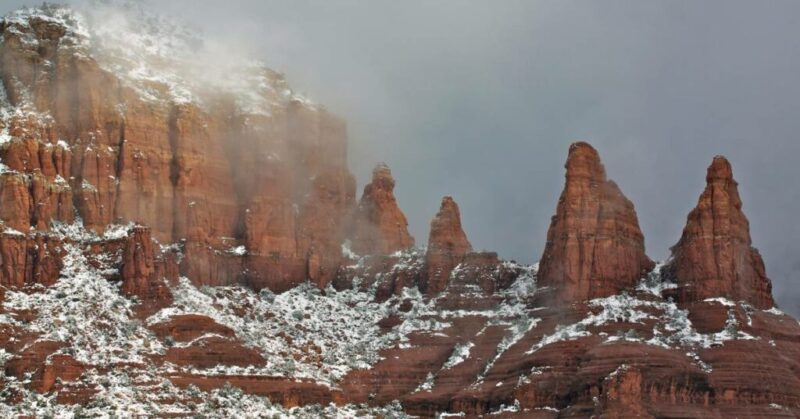
Sedona, AZ, is a beautiful place to visit no matter what time of year it is. However, if you are planning a winter visit, you may be wondering when does it snow in Sedona, AZ?
While the area around Sedona, AZ, does get some snowfall each year, it is not usually enough to cause any major disruptions. In general, the first snowfall of the season occurs in early December, with occasional flurries throughout the month. The heaviest snowfalls usually occur in late January or early February.
However, even if there is no snow on the ground, Sedona, AZ, can still be quite cold during the winter months. Daytime highs in December and January only average in the mid-50s, so be sure to pack some warm clothing if you plan to visit during this time.
Overall, Sedona, AZ, is a great place to visit any time of year. However, if you are hoping to see some snowfall during your trip, the best time to visit is typically from early December through early February.
The Seasons in Sedona AZ
There are four distinct seasons in Sedona, each with its own unique weather and activities.
Spring – March through May – is a time of warmer temperatures and blooming flowers. The crowds are smaller than in peak season, making it a great time to enjoy hiking, mountain biking, and golf.
Summer – June through August – is when Sedona really heats up. Temperatures can reach over 100 degrees Fahrenheit, so it’s best to enjoy swimming, casual walks, and air-conditioned indoor activities during this time.
Fall – September through November – brings cooler temperatures, and the landscape transforms with the changing leaves. It’s a beautiful time to take scenic drives, go on hikes, and camp under the stars.
Winter – December through February – can be chilly in Sedona, with temperatures sometimes dipping below freezing at night. This is a great time to enjoy skiing or snowboarding at the nearby Arizona Snowbowl or just curl up by the fireplace with a good book.
What Is the Climate Like in Sedona, AZ?
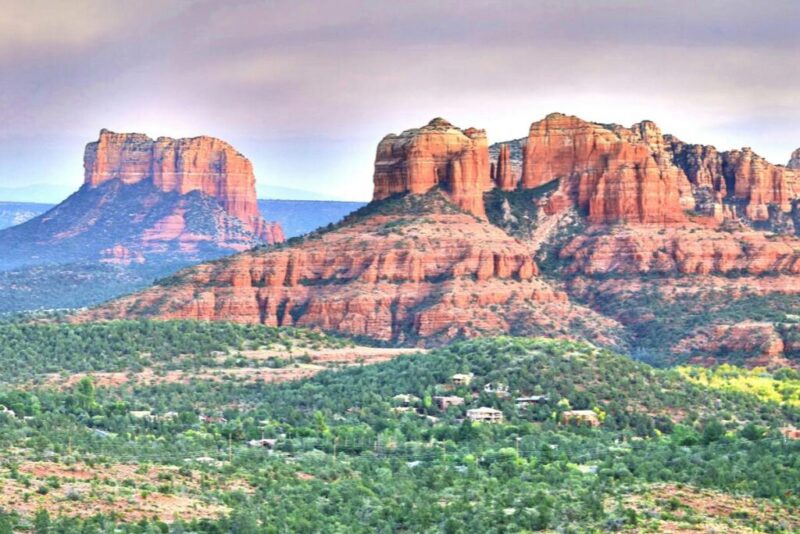
Sedona, Arizona, has a desert climate, which means that it generally experiences hot, dry summers and mild, pleasant winters.
The area is known for its warm, sunny weather, with average high temperatures reaching into the mid-90s Fahrenheit during the summer months.
In the winter, temperatures in Sedona are generally much cooler, with average highs in the 60s and lows in the 30s. The area can also experience some precipitation during the winter, including light snowfall and occasional rain showers.
Overall, Sedona has a pleasant, mild climate that is ideal for outdoor activities and sightseeing. If you’re planning a trip to the area, it’s a good idea to pack light, breathable clothing for the summer months and a jacket or sweater for the cooler winter weather.
Some Popular Things to Do in Sedona, AZ, During Winter
With its dramatic red rocks, Sedona is a year-round destination. However, winter is a particularly beautiful time to visit, when the desert scenery is dusted with snow, and you can enjoy all the area has to offer without the crowds.
Here are some ideas of things to do in Sedona, AZ, in winter.
Hike or Snowshoe in Snow Canyon State Park
This state park just north of Sedona is a must-visit in any season. In winter, you can hike or snowshoe through the red rock landscape covered in a blanket of snow. Be sure to dress warmly and pack plenty of water.
Visit the Chapel of the Holy Cross
This beautiful Catholic chapel, built into the red rocks, is open year-round. It’s especially stunning in winter when it’s capped with snow.
Take a Scenic Drive
Winter is a great time to take advantage of Sedona’s scenic drives. The roads are less busy, and you’ll have expansive views of the snowy landscape. Some of our favorite drives include Oak Creek Canyon, Highway 89A, and Schnebly Hill Road.
Go Stargazing
With its dark skies, Sedona is one of the best places in Arizona for stargazing. Head out to one of the area’s many lookouts for an unforgettable experience gazing up at the stars against the backdrop of Sedona’s iconic red rocks.
Adytum Sanctuary
This sanctuary is home to a wide variety of animals, including wolves, coyotes, foxes, owls, and eagles. Visitors can take part in guided tours or simply explore the sanctuary at their own pace.
Oak Creek Brewery & Grill
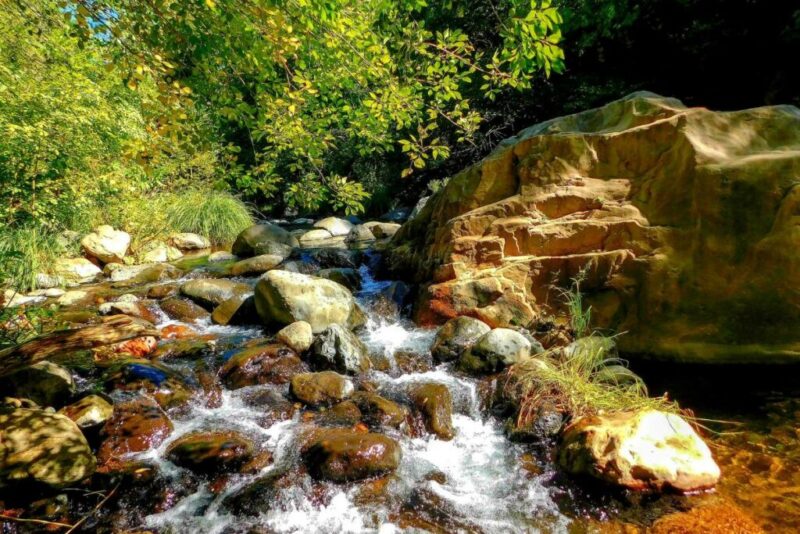
This cozy brewery and grill is the perfect spot to warm up after a day of exploring Sedona’s winter wonders. With a rotating selection of locally brewed beers on tap, as well as burgers and other American classics, Oak Creek Brewery & Grill is not to be missed.
The Honeymoon Trail
This scenic trailhead offers stunning views of the surrounding area, making it the perfect place for a romantic winter walk or hike.
Conclusion
From what we can tell, it does not appear that Sedona, Arizona, experiences snowfall on a regular basis. However, there have been instances where the area has received a dusting of snow.
Based on this information, we would recommend packing accordingly if you are planning to travel to Sedona, AZ, during the winter months.
Related Articles
- Does It Snow In Arizona?
- Does It Snow In Flagstaff, Arizona?
- Does It Snow In Kingman, Arizona?
- Does It Snow In Prescott Valley, AZ?
- Does It Snow In Wickenburg, AZ?
- Does It Snow In Chino Valley?
FAQs: About Snow in Sedona, AZ
Does It Snow in Sedona in January?
While temperatures in Sedona can drop low enough for snow to occur during the winter months, it is not a guarantee.
Does It Snow in Sedona in February?
The average high temperature in Sedona during the month of February is around 60 degrees Fahrenheit, with the average low being around 30 degrees.
While it doesn’t usually get cold enough for snow to stick around for very long, it’s not uncommon for the area to see some light snowfall that melts quickly.
What Are the Snowfall Accumulation Averages in Sedona, AZ?
Related Posts:
- Does It Snow In Philadelphia? From Liberty Bells to…
- Does It Snow In Charleston, SC? Sleigh Bells in the South?
- Does It Snow In Russia? Bundled Up in Red Square
- Are Red-Eye Flights Dangerous? Flying into the Twilight Zone
- Does It Snow In Brazil? Soccer in Snow Boots?
- Does It Snow In San Antonio? Snow-Covered River Walk?

